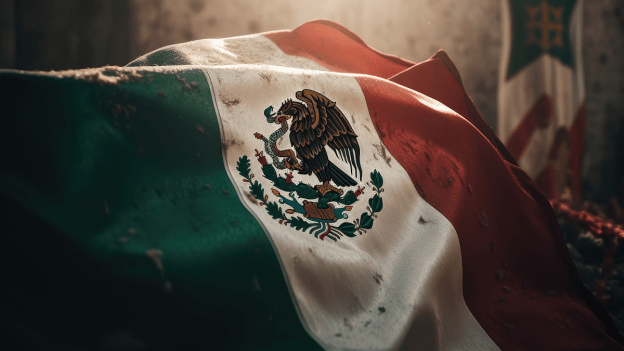The Mexican revolution was not a monolithic struggle but a series of shifting alliances, ideologies, and conflicts. One of the revolution’s key goals was agrarian reform. Peasants and indigenous communities sought to reclaim their ancestral lands from powerful landowners, demanding a more equitable distribution of resources.
The revolution eventually led to the overthrow of the oppressive dictatorship of Porfirio Díaz. What ensued was a decade-long struggle for justice, equality, and the rights of the disenfranchised. The Mexican Revolution was fueled by the aspirations and struggles of numerous remarkable individuals. Figures like Venustiano Carranza, Emiliano Zapata, Pancho Villa, and Francisco Madero played crucial roles in the revolution.
Francisco Madero
The spark that set off the Mexican revolution was Francisco Madero’s call to arms on November 20, against Porfirio Díaz in 1910. Upon Díaz’s dubious victory, Madero escaped arrest and fled to the United States. His escape was a prelude to the historic Plan of San Luis Potosí, a call to overthrow Díaz’s regime. This ignited the Mexican Revolution, marking a turning point in the pursuit of democratic reforms.
Francisco Madero, along with other revolutionaries, Carmen Serdan and Hermila Galindo, is shown on the Mexican 1000 Peso banknote from 2022. The reverse of the gray banknote depicts a jaguar in the rainforest and the ancient Mayan City of Calakmul. Francisco Madero also appears on the note’s watermark area, along with an electrotype 1000.
Venustiano Carranza
Venustiano Carranza who was the governor of Coahuila in 1910, joined Francisco Madero’s revolt against Diaz. He also led a struggle against Madero’s assassin, Victoriano Huerta. Venustiano Carranza served as the first president of the new Mexican republic.
Venustiano Carranza is portrayed on the obverse of the 1982 Mexico 100 Pesos Banknote, along with three soldiers from the painting “La Trinchera ” (The Trench) by Clemente Orozco. The banknote’s reverse displays a coyote and mountain lion frieze from Tula. It also shows a bank guilloche, the reclining stone figure Chac Mool, and the bank seal.
Alvaro Obregon
A widowed father and successful farmer, Alvaro Obregon entered the Mexican Revolution post the 1913 coup against Madero. Aligning with Carranza, he swiftly rose as a natural leader, becoming the Constitutionalist Army’s top general. After the Constitutionalist Army defeated Huerta in 1914, Obregon faced internal strife, decisively defeating Villa in 1915. Carranza’s conservative approach disillusioned him, leading to a revolt in 1920.
This 6-piece coin set of Mexican 5 peso coins features a Mexican leader on their reverse, including Alvaro Obregon. Coins from this set were issued by the Banco de Mexico in 2008 in 2008 to commemorate the Centenary of the Revolution. Their obverse is designed with a Mexican golden eagle on a pear cactus attacking a snake.
Pancho Villa
Pancho Villa spearheaded the movement that ousted President Porfirio Díaz in 1911. Initially a key ally of Francisco I. Madero, Pancho Villa joined the Constitutionalist Army led by Venustiano Carranza after Madero’s ousting in 1913. His alliance with Carranza fractured after Huerta’s defeat in 1914, leading to a coalition government with Emiliano Zapata. Villa’s popularity soared, prompting U.S. contemplation of recognizing him as Mexico’s legitimate authority. However, internal strife ensued, culminating in Villa’s defeat by Álvaro Obregón in 1915.
Francisco Pancho Villa is highlighted on the commemorative Mexico 5 Peso coin. The revolutionary leader on horseback is shown on the coin’s reverse while an eagle perched on a prickly pear cactus and devouring a snake is displayed on the obverse.
Emiliano Zapata
Emiliano Zapata, whose portrait is featured on the Mexico 10 Peso banknote from 1994, advocated for agrarian rights. Leading the Zapatistas and proclaiming the Plan de Ayala that called for land reforms, Emiliano Zapata fiercely opposed land inequities, demanding redistribution to empower rural communities.
Zapata’s legacy resonates as a symbol of social justice and peasant empowerment. The revolutionary leader is shown on the reverse of the Mexico 10 Peso note, riding on a horse, talking to a peasant. In the background are a smokestack and snow-covered mountains.








I think that is really interesting. The banknotes look really nice.
Thank you